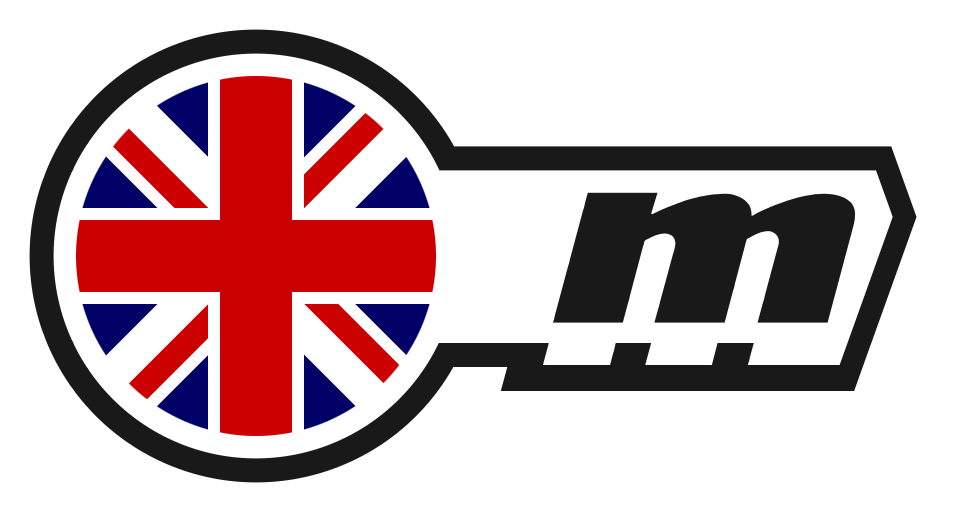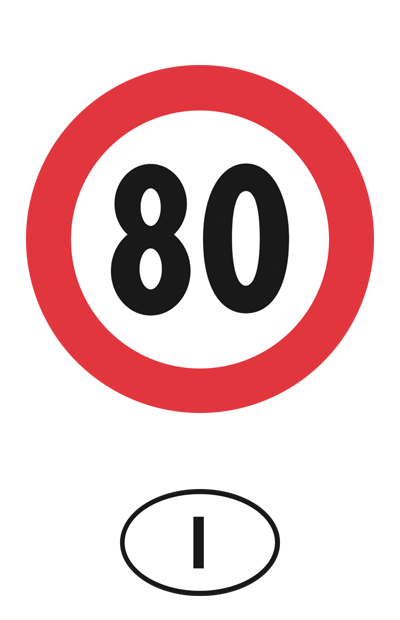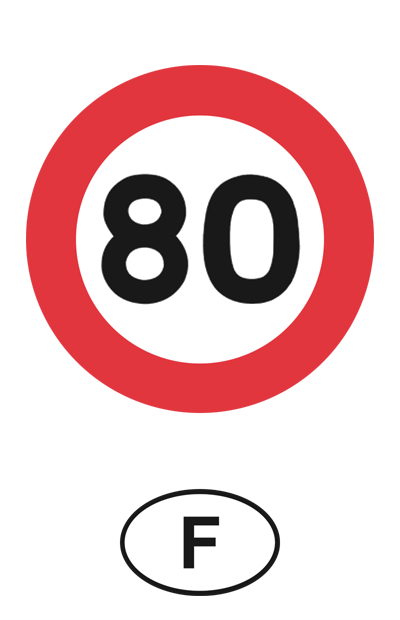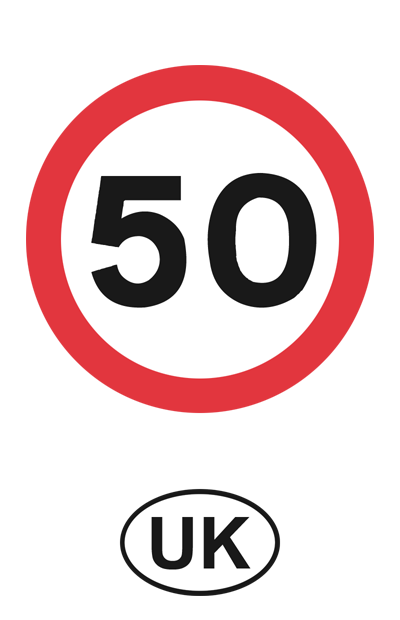Why metricate?
There are many reasons in favour of adopting the metric system in place of old non-metric units of measurement, and, no less persuasively, there are no good reasons for converting in the opposite direction.
Global standard
A single rational system of measurement units used throughout the world is vital to the smooth operation of international trade. The metric system is the international standard for weights and measures.
“We can far better deal with those countries if we adopt the metric system. We cannot expect people whom we want to buy our goods to mess about working out our farthings, pence, shillings and pounds, and inches, feet and yards, when they can trade with many other countries on the metric system.”
Mont Follick, House of Commons debate on the Decimal System – 12 May 1953
Ease of use
In contrast to imperial weights and measures, the metric system is easy to use. Its principal units and prefixes can be taught in a single school lesson. Other than the multiples of 10 and 1000 associated with the system’s prefixes, there are no conversion factors to learn.
For example, to measure length in imperial units, one needs to be familiar with inches, feet, yards, chains, furlongs and miles, together with a host of factors used to convert between them, such as 3, 8, 12, 22, 36, 1760, etc.
In contrast, in the metric system, length is measured using one unit – the metre, with the option to use prefixes when numbers become cumbersome on account of being very small or very large. As a consequence, calculations using metric units are as simple as any other numerical calculations.
Scalability and understanding
All metric measurements scale seemlessly from the very small, to the very large. Using metric units, it is easy to see the relative sizes of things, which in turn enhances understanding of our surroundings. For instance, it is easy to see that 7 kilometres is ten times as far as 700 metres, whereas it is not immediately apparent how many miles a distance ten times as far as 700 yards would be.
Education
Metrication removes the need for school children to learn the countless conversion factors used to carry out arithmetic with non-metric measurement units. Long division of quantities expressed in multiple imperial units is a disheartening exercise, and time spent on such activities could be freed up for the study of much more interesting and profitable fields of mathematics.
“… in short, nothing could be more confused than the present system. The adoption of the metric system would cure this want of uniformity, and would substitute for that which was inconvenient and difficult to learn a system which was simple and easy to be acquired. The adoption of this system would save half the time which was at present occupied in making calculations.
… a boy could make the same progress in arithmetic taught according to the metric system in ten months as would according to the existing method take him two years and ten months to accomplish.”
Earl Fortescue, House of Lords debate on the Metric System – 21 July 1864
In 1895, a government report indicated that the continued use of imperial units in education was holding back children’s education. The report, by the Select Committee on Weights and Measures, estimated that “no less than one year’s school time would be saved”, if the metric system was taught in schools in place of the imperial weights and measures used at that time.
Single system
The need for a single system of measurement for all official purposes has been recognised since at least 1215.
“Let there be one measure for wine throughout our kingdom, and one measure for ale, and one measure for corn, namely “the London quarter”; and one width for cloths whether dyed, russet or halberget, namely two ells within the selvedges. Let it be the same with weights as with measures.”
Magna Carta – 1215
In 1862, the Select Committee appointed to consider the practicability of adopting a Simple and Uniform System of Weights and Measures, reported that, excluding the occasional use of the metric system, the UK had “no less than ten different systems of Weights and Measures, most of them established by law.”
“For measures of length, we have the ordinary inch, foot and yard. We have in cloth measure, yards, nails and ells. There are four different sorts of ells.
For nautical purposes, we have fathoms, knots, leagues and geographical miles differing from the common mile. The fathom of man-of-war is 6 feet; of a merchant vessel, 5½ feet; of a fishing-smack, 5 feet.
We have also the Scotch and Irish mile, and the Scotch and Irish acre. There are several sorts of acres in the United Kingdom, and there are a great variety of roods.
We have, in almost every trade, measures of length especially used in those trades:
- for the measurement of horses, we have the hand;
- shoemakers use sizes;
- and we are compelled to adopt gauges where the French use the millimetre. These gauges are entirely arbitrary. The custom of the trade is the only thing which would decide the question, in case of dispute.
For measures of capacity, we have 20 different bushels: we can scarcely tell what the hogshead means. For ale it is 54 gallons, for wine 63. Pipes of wine vary in many ways; each sort of wine seems to claim the privilege of a different sort of pipe.
For measures of weight, we have about 10 different stones; a stone of wool at Darlington is 18 lbs.; a stone of flax at Downpatrick is 24 lbs.; a stone of flax at Belfast is only 16¾ lbs.; but it is also at Belfast 24½ lbs., having in one place two values. The hundredweight may mean 100 lbs., 112 lbs., or 120 lbs. If you buy an ounce or pound of anything, you must inquire if it belongs to Dutch, troy, or avoirdupois weight.”
Select Committee on Weights and Measures – 15 July 1862
If traders are free to choose different measurement units, price transparency is impossible. Consumers are forced to learn conversion factors, and must carry out tedious arithmetic in order to compare prices.
If our road signs use different units for speed limits and distances from the rest of the world, our cars have to be fitted with cluttered instruments with more than one measurement scale, in order for us to be able to drive internationally.
The Department for Transport have proved that it is impossible to maintain the use of a single non-metric system of measurement for road signs. After many years of resistance, the need for metric units on restriction signs became irresistible, resulting in the introduction of mandatory dual unit signs in 2016. The unit of speed used in digital tachographs and vehicle speed limiters is km/h, which means that road speeds also now use two measurement systems.
The only measurement system option available that can be used as a single official measurement system is the metric system.
Why completing metrication matters
Following a gradual adoption of the metric system beginning in the 19th century, with rapid progress in the 1960s and 1970s, the UK has for many years now been stuck in a measurement limbo, with metric being used almost exclusively for a large variety of purposes, but with old imperial units still in use for others – most notably for road signs.
Is the use of two systems an advantage?
When arguing against the completion of metrication, opponents sometimes claim that the UK’s current muddled use of metric units for some things, and imperial for others, gives us an advantage that should be envied when it comes to measurement, in that it somehow makes us ‘bilingual’ in both systems. This alleged ability has even been said to be our ‘superpower’, a skill unique in the world, that allows us to move effortlessly between imperial measurements and standard metric units, and as such we should not be seeking to give it up by completing the switch to the exclusive use of the metric system for all official purposes.
The reality of course is very different. As a YouGov survey (commissioned by the UK Metric Association in 2013) showed, British people in general have a poor knowledge of both systems, but understand metric marginally better. A key finding of the survey included the fact that 76% of respondents (including 95% of the 25-39 age group) were unable to answer correctly, or at all, how many yards there are in a mile.
There is also plentiful anecdotal evidence that, despite the sale of groceries being almost entirely in metric units for over 20 years, many people today remain unable to comprehend a weight loss when expressed in kilograms. The continued personal use of stones and pounds for body weight has led to the loss of any ability to compare weight loss to the weights of common foodstuffs.
Does the use of two systems give us freedom?
Ignoring the fact that this is never raised as an issue in countries that have been 100% metric for many years, some have argued that the continued use of two systems is an issue about freedom of choice – people should have the freedom to choose which system of measurement to use, they say.
No one would argue against freedom of choice in one’s own home, but for official purposes this is a false argument. If freedom of choice of measurement units is granted for trade, it is the salesman that chooses, not the customer. If different traders use different units, the customer loses the ability to compare prices easily.
With two systems in use at the same time, the only way to protect consumers is to require all traders to mark all goods in both systems. The use of two systems gives no one more freedom. It just creates more work for traders, and the increased clutter on labels makes price comparisons less straight forward for consumers.
In contrast, the use of a single universal system of measurement enhances a customer’s freedom to make informed choices about purchases.
Similarly, with the units used on road signs, road users have no freedom to choose the units used – these are chosen by the Government. If the Government chooses to continue to use yards and miles, road users are forced to understand two systems in order to be able to travel internationally. Switching all road signs to metric units will mean that road users will only ever need to be familiar with one system of measurement when driving anywhere in the world outside the USA.
Dual units in the media
Rather than adopting a policy of transition from the use of old imperial units to the use of modern metric units, some providers of news and weather forecasts have chosen to use dual units indefinitely. On websites with dual units, virtually every mention of metres is accompanied by a bracketed value in feet, every mention of Celsius is accompanied by a value in Fahrenheit. This, they would argue, keeps everyone satisfied.
Again, this is a false argument. It assumes that the avoidance of choosing one system over another is the only consideration when choosing measurement units. It pays no regard to legibility or comprehension. It also creates a new dilemma, which doesn’t exist when using metric-only. By choosing to use dual units, the wishes of those who prefer single units are ignored. Many find it irritating to constantly have to pick out values from measurements given in two systems at the same time. Apart from the obvious sensible reasons to stick to metric units, the use of dual units is probably alienating a large proportion of the target audience.
In recent years, the failure to complete the national metrication programme as a whole has encouraged some to regress to using dual units, having previously been metric-only.
For example, in the 1990s, some local radio stations switched away from the exclusive use of Celsius, and adopted a practice of quoting all temperatures in both degrees Celsius and Fahrenheit. This had the consequence that a string of temperatures given in dual units required more attention from the listener than the previous shorter list of single values. The knock-on effect was that it became easier for none of the information to be remembered at all, especially if a listener was busy with other tasks at the time of listening.
Incompatible units used for comparison
The description of goods is not fully covered by current weights and measures legislation. This has led to the anomaly where some products can continue to be described using measurement units that are no longer authorised for trade. If traders use different units to describe similar goods, the ability of consumers to compare products is adversely affected.
For example a refrigerator’s capacity might be described in cubic feet in one situation, but in litres in another, making it difficult to compare products.
Similarly, estate agents commonly describe room dimensions in feet and inches, and floor areas in square feet, even though furniture is sold in metric sizes, and carpet prices are quoted per square metre. The use of two systems here makes it difficult for anyone looking at new properties to estimate furniture requirements and costs for new carpets.
The square foot and cubic foot are units not authorised for trade, but are permitted for product descriptions.
Extending weights and measures legislation to cover product descriptions, and real estate details, as part of a programme to complete metrication, will enhance general comprehension and benefit consumers.
Incomprehension
In all walks of life, effective communication about dimensions and quantities requires everyone to use the same measurement units. Although some people are familiar with both metric and imperial units, the continued existence, and in some cases the official recognition, of two different and incompatible sets of measurement units leads many people to become more familiar with one set of units than the other. While many people use metric only, the failure to complete metrication inevitably means that some continue to use imperial only. The result is mutual incomprehension and breakdowns in communication.
Accidents and public safety
Accidents can occur as a result of the existence of two systems. Sometimes these can be extremely costly, or dangerous. If two parties in a transaction routinely use different systems, specifications given by one can easily be misinterpreted by the other.
- The most infamous example of this is the loss of NASA’s Mars Climate Orbiter in 1999. This was caused by a misunderstanding between NASA, who were using metric units, and its contractor, Lockhead, who were using US customary units. The specifications for thrust in newtons were mistakingly interpreted as pounds-force. The result was that the spacecraft entered orbit around Mars at the wrong altitude and burned up in the Martian atmosphere.
- Similarly, in 1983, an Air Canada Boeing 767 ran out of fuel because the refueling requirements had been mistakenly assumed to be in pounds, when they were actually in kilograms.
- When medical doses need to account for body weight, calculations are always carried out using kilograms. The potential for life-threatening dose errors to occur was highlighted by an exchange in the House of Lords on 25 February 2010, when peers drew attention to the residual use of imperial units for weighing in some parts of the National Health Service.
Numerous domestic incidents happen all the time. e.g.
- Measuring a window in inches to place an order for new curtains over the telephone, only to receive the goods with dimensions in centimetres.
- Asking someone to get a 2-litre bottle of milk, but they purchase a 2-pint bottle by mistake.
Most domestic accidents would not be classed as serious, but the potential for them to happen at all continues only because metrication has not been completed.
Conversion errors
In a situation where two incompatible measurement systems are in use, with some people using one system and other people the other system, it is sometimes necessary to provide conversions – for example, in news reporting, recipes, DIY instruction manuals. In other cases, carpenters, dressmakers or cooks may do their own conversions. Inevitably, mistakes sometimes occur. Particularly error-prone are Celsius to Fahrenheit conversions; and the process for converting “miles per gallon” to “litres per 100 km” is arithmetically challenging.
Enforcement
Currently, almost all retail trade is carried out in metric. However, following encouragement from government to not fully enforce weights and measures legislation, some small market traders continue to sell loose goods using units that are no longer authorised for trade.
A renewed committment to properly enforce legislation, as part of a process to complete metrication, would be in the interest of consumer protection.
Costs
It is not possible to put a definitive figure on the cost of having to operate in two systems. Undoubtedly, however, there are costs to manufacturers, retailers and others in having to provide two sets of information. In some cases, computer programmes will make the conversions automatically, but especially for small traders and for non-repetitive operations, the cost – even if only in wasted time and effort – must be significant.
Other costs can sometimes be precisely quantified: the cost of the lost Mars Climate Orbiter was given by NASA as $655 million. The Department for Transport has also estimated the cost of bridge strikes resulting from foreign HGV drivers not understanding imperial units as £234 000 annually without taking into account the cost of delays to road users, which are noted as being “non trivial”.
Failure to reap the benefits of investment in metrication
In past decades, considerable resources have been invested by both public and private sectors in metrication:
- Industry has upgraded machinery in factories and retrained their staff.
- Food manufacturers have adjusted to to new package size requirements.
- Retailers have purchased new metric scales.
- Schools have replaced textbooks, and adjusted to changes in the curriculum.
Unfortunately, much of this investment continues to be wasted. The most visible example of this is when school children, who have used metric throughout their school years, are faced with the need to become familiar with imperial units when they are old enough to learn to drive. At a time when their knowledge of metric units should be reinforced with practical experience, young people experience a pressure to forget metric units.
Peer pressure, reinforced by main stream media, also encourages people to measure their body weight in stones, and ignore the kilograms they learn in schools. This negates the ability to compare weight losses with common foodstuffs such as 1 kilogram bags of sugar.
Perception of the UK from abroad
Visitors to the UK cannot fail to notice the odd mixture of measurement units used in the UK:
- litres at petrol stations, but miles on road signs,
- square metres in carpet stores, but square feet on office space hoardings,
- kilograms for food, but stones for personal body weight.
Some may find it amusing, but others may take a more serious view and conclude that the UK is not fully committed to basic international standards for trade. The effects of this on inward international investment can only be detrimental to the UK’s prosperity.
The potential for such unfavourable perceptions can be avoided very easily with the introduction of a short programme of legislation to complete the UK’s metrication process.














